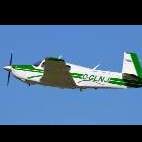-
Posts
424 -
Joined
-
Last visited
-
Days Won
1
Slick Nick last won the day on November 22
Slick Nick had the most liked content!

Slick Nick replied to Yetti's topic in General Mooney Talk

Slick Nick replied to Lax291's topic in Miscellaneous Aviation Talk

Slick Nick replied to TheAv8r's topic in Vintage Mooneys (pre-J models)

Slick Nick replied to NotarPilot's topic in Avionics/Panel Discussion

Slick Nick replied to ighazali's topic in Avionics/Panel Discussion

Slick Nick replied to ighazali's topic in Avionics/Panel Discussion

We have placed cookies on your device to help make this website better. You can adjust your cookie settings, otherwise we'll assume you're okay to continue.